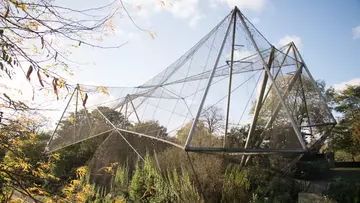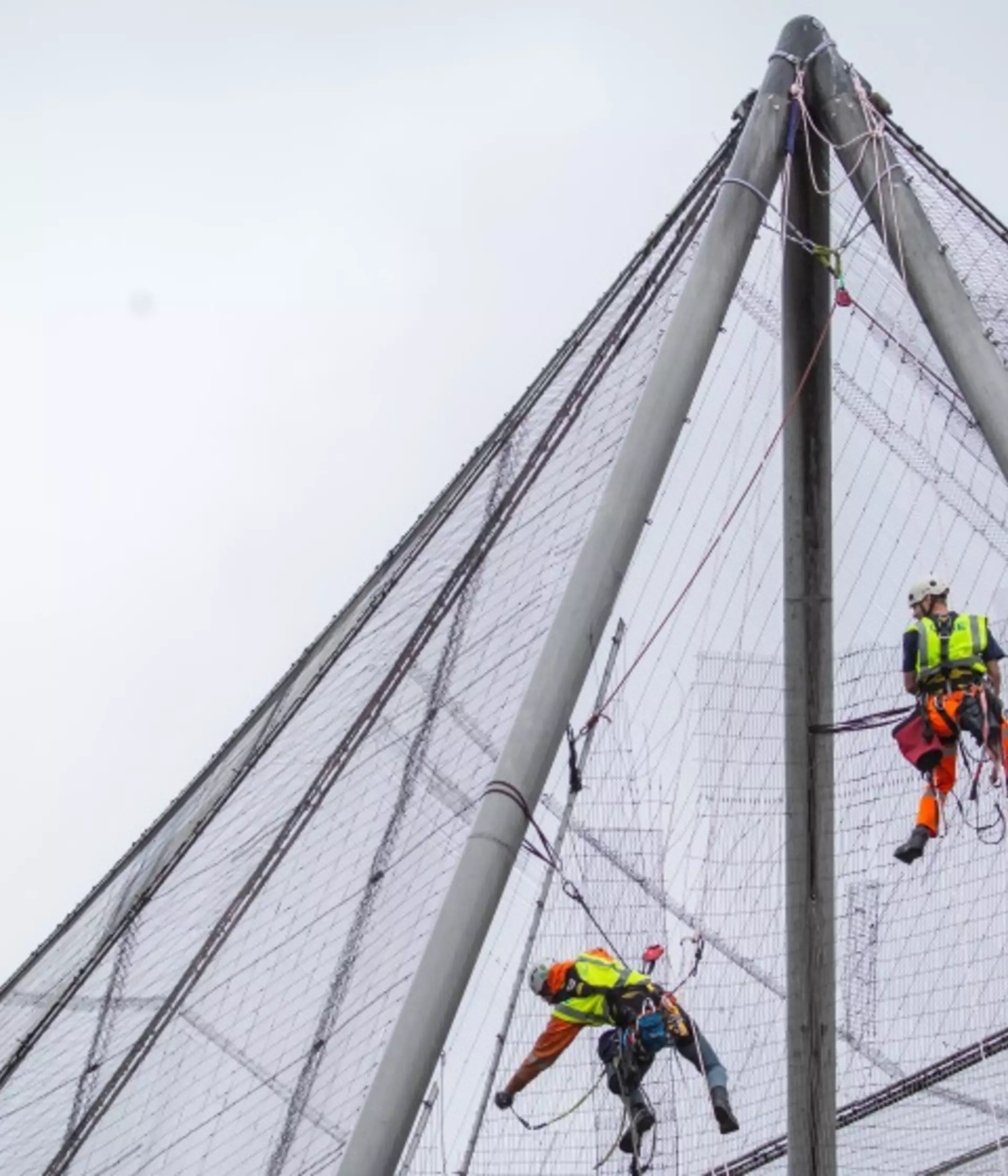
ZSL
Zoological Society of London
Landmark footage shared by London Zoo shows the historic moment the famous Snowdon Aviary is ‘unwrapped’ - signalling a defining moment in the iconic structure’s restoration journey.
The dramatic footage shows experts abseiling down the Grade II listed building this morning (Friday 30 July) to carefully peel away the first of 200 mesh panels wrapped around it in 1965 - starting the one-year countdown to its summer 2022 rebirth as a new home for a troop of Eastern black and white colobus monkeys.
A new home for our Colobus monkeys
To celebrate the renovation project’s milestone, the Zoo also revealed today that the former aviary will be renamed Monkey Valley when it opens next summer - in recognition of its new role as the primate troop’s new home.
London Zoo’s Director of Fundraising and Engagement, James Wren said: “It’s incredible to think that this piece of architectural history has now been seen in its present form on the Primrose Hill skyline for the last time.
“Taking down the first 25metre tall panel was no small feat for everyone involved today and it will take up to a month of further careful work for the remaining panels to be removed.”

Following the sympathetic renovation, which will include the careful replacement of over 3800 sqm of mesh, the famous peaked silhouette of the historic structure will be fully restored to the London skyline, taking the same size and form as the original.
Preparing for Monkey Valley
The new, more flexible mesh replacing the long-standing panels has been chosen with the colobus monkeys’ needs in mind but is also closer to architect Cedric Price’s original vision for the structure; in the 1960s, Price’s plans called for a steel that had both tensile movement and flexibility, which didn’t exist at the time.
“The original rigid steel mesh panels will be replaced with an exciting new - and more flexible - material, which the agile colobus monkeys will easily be able to climb on and jump from,” explained James.
“We're excited to get to work on this ambitious and sensitive restoration project, which will breathe new life into a truly iconic structure - part of the capital’s history for more than 50 years.”
Game changing funding
Thanks to a grant of over £4million from The National Lottery Heritage Fund and a £1 million donation from The Ambika Paul Foundation - alongside assistance from other dedicated ZSL supporters - the newly developed space will allow generations of future visitors and school children to get even closer to the amazing animals at London Zoo.
James added: “Monkey Valley will reflect our world-leading expertise in animal care and - thanks to money raised by National Lottery Players - engage millions of future visitors, while restoring the former Aviary’s position on the London skyline.
A new lease of life
One of the Zoo’s most recognisable buildings, the Aviary celebrated its 50th anniversary in 2015, after far surpassing its intended 30-year lifespan.
Inspired by the graceful movements of flying birds, the Snowdon Aviary was truly unique for its time; conceived by Lord Snowdon and realised by architect Cedric Price with structural engineer Frank Newby, it was pioneering in its use of aluminium and tension for support and was Britain’s first walk-through aviary when the exhibit opened in 1965.
It is also a rare example of a completed work by Price – a visionary architect who built very little but whose influence on British architecture still resonates today.
The structure’s restoration has been similarly inspired – this time by the elegant movements of the shaggy-tailed primates who will soon call it home; the impressive leaps of the colobus from treetop to treetop have earned the species the nickname ‘high-flying monkeys’.
Find out more about Monkey Valley at London Zoo
